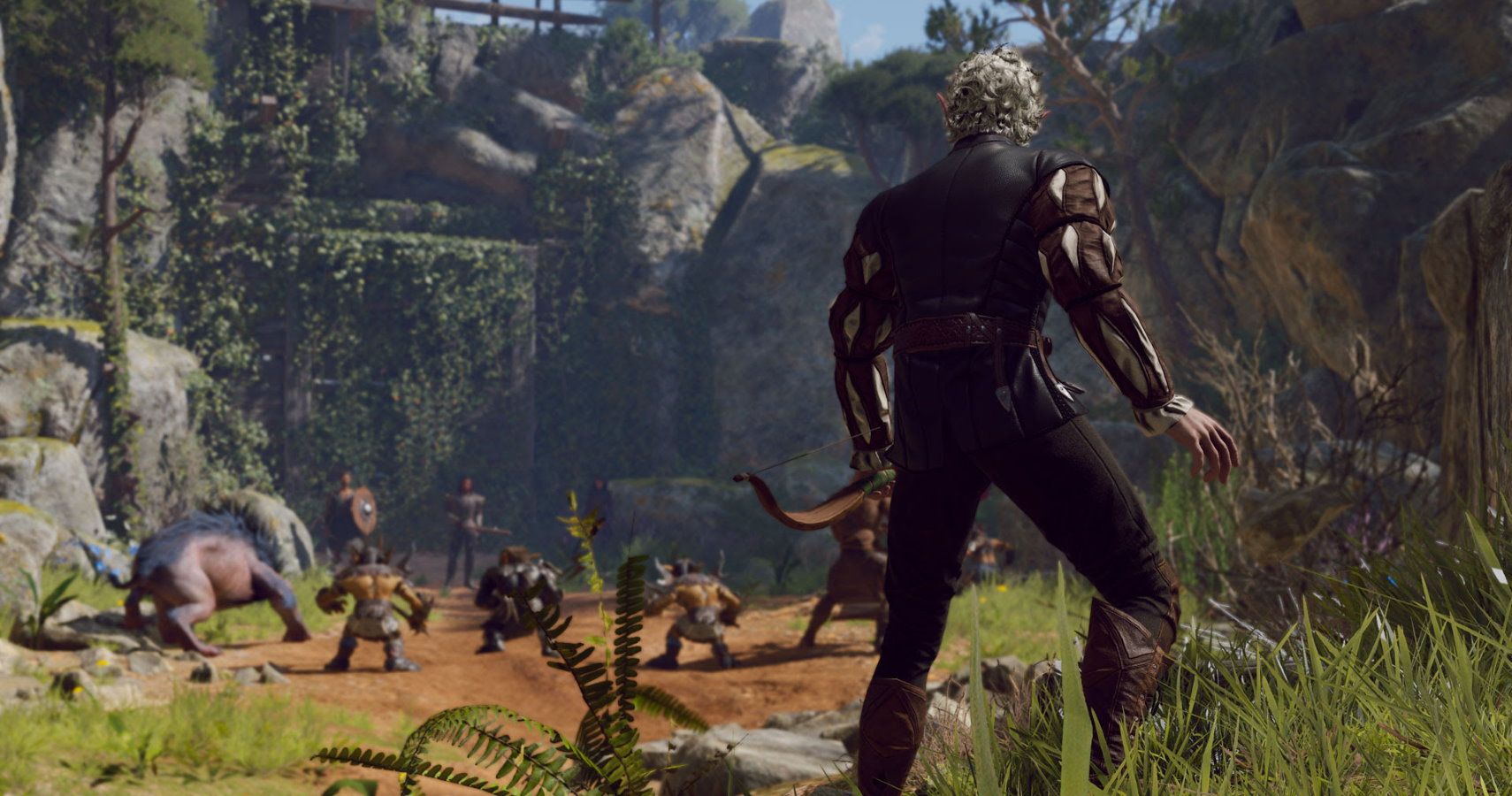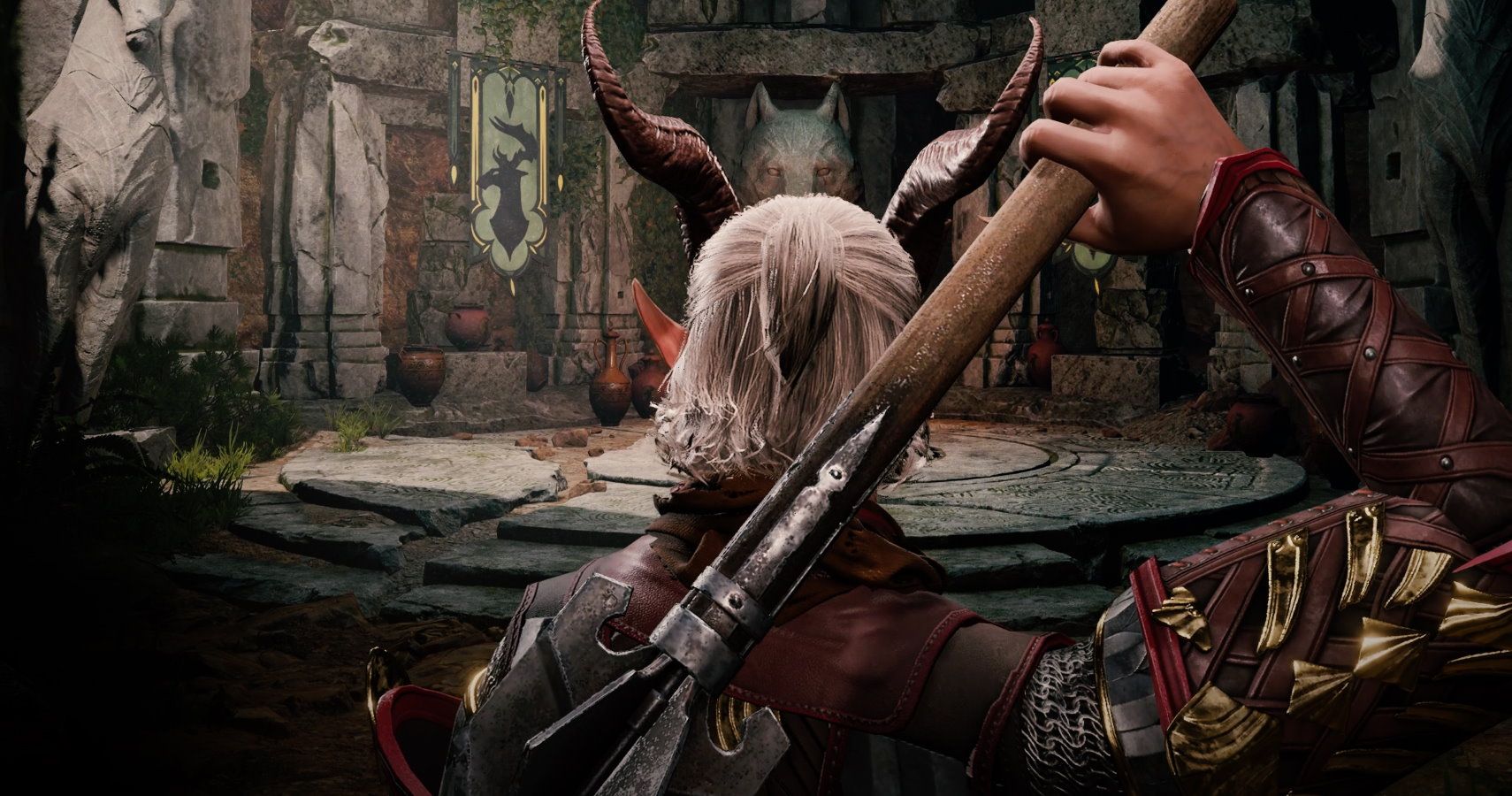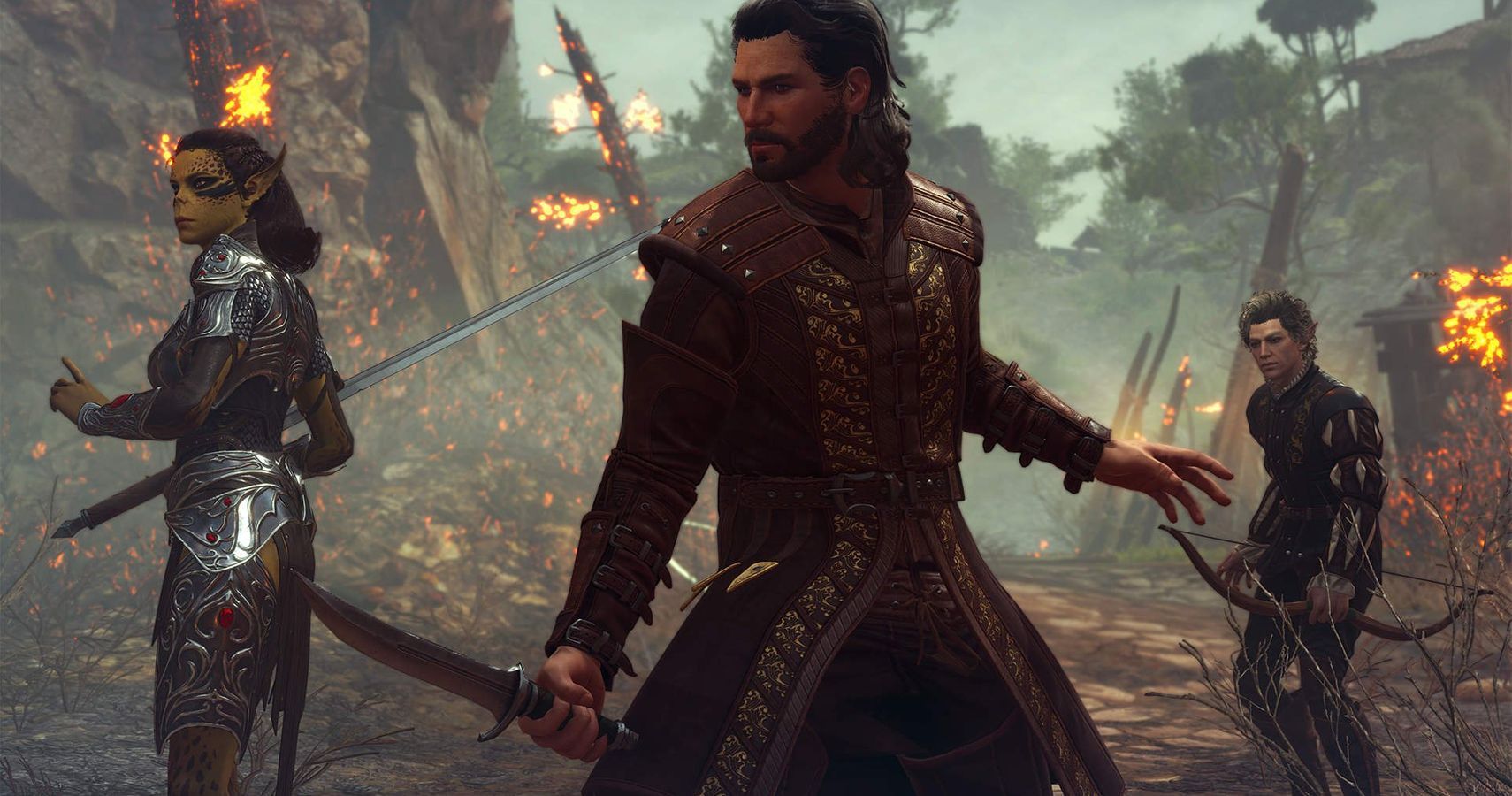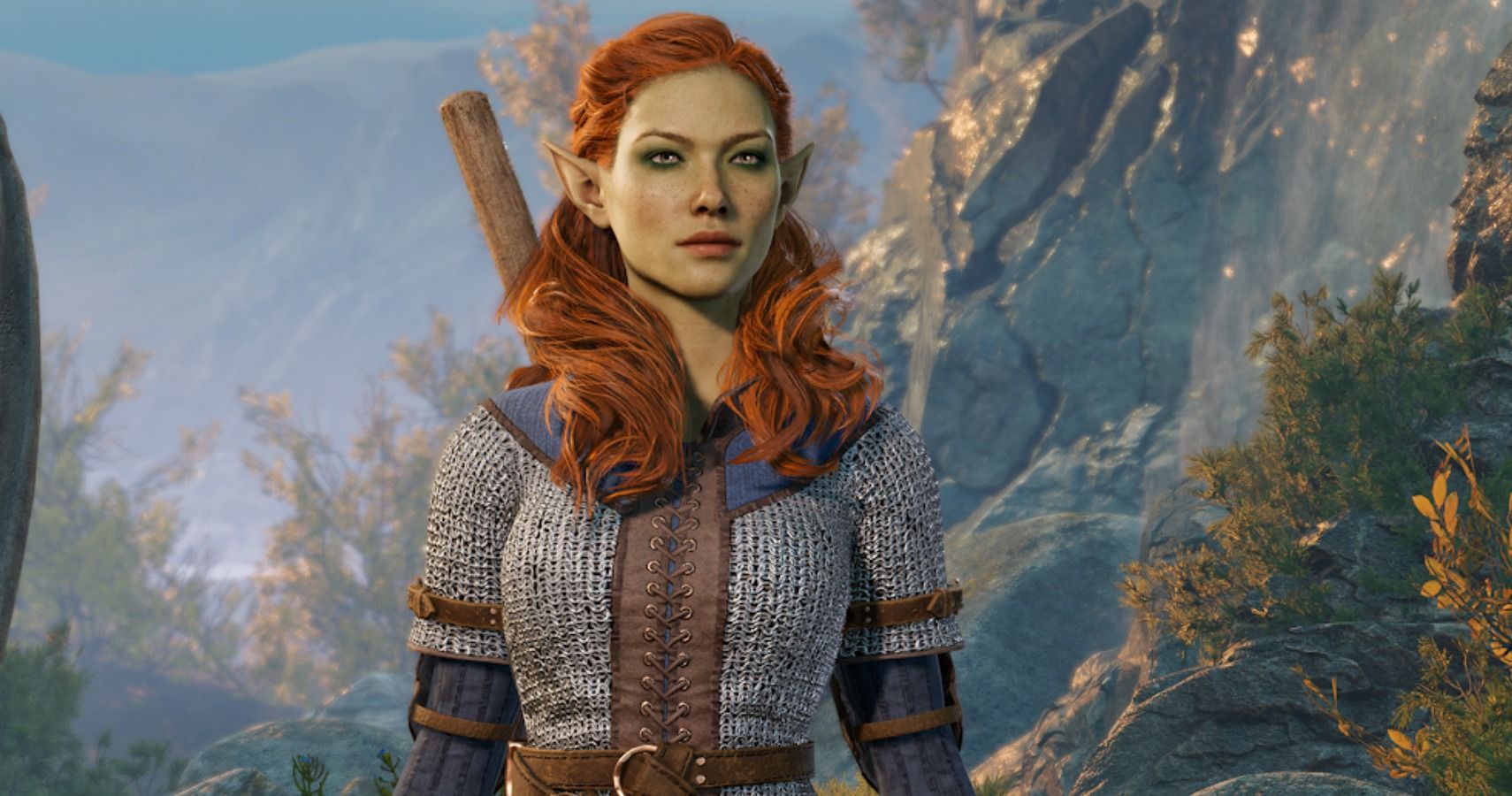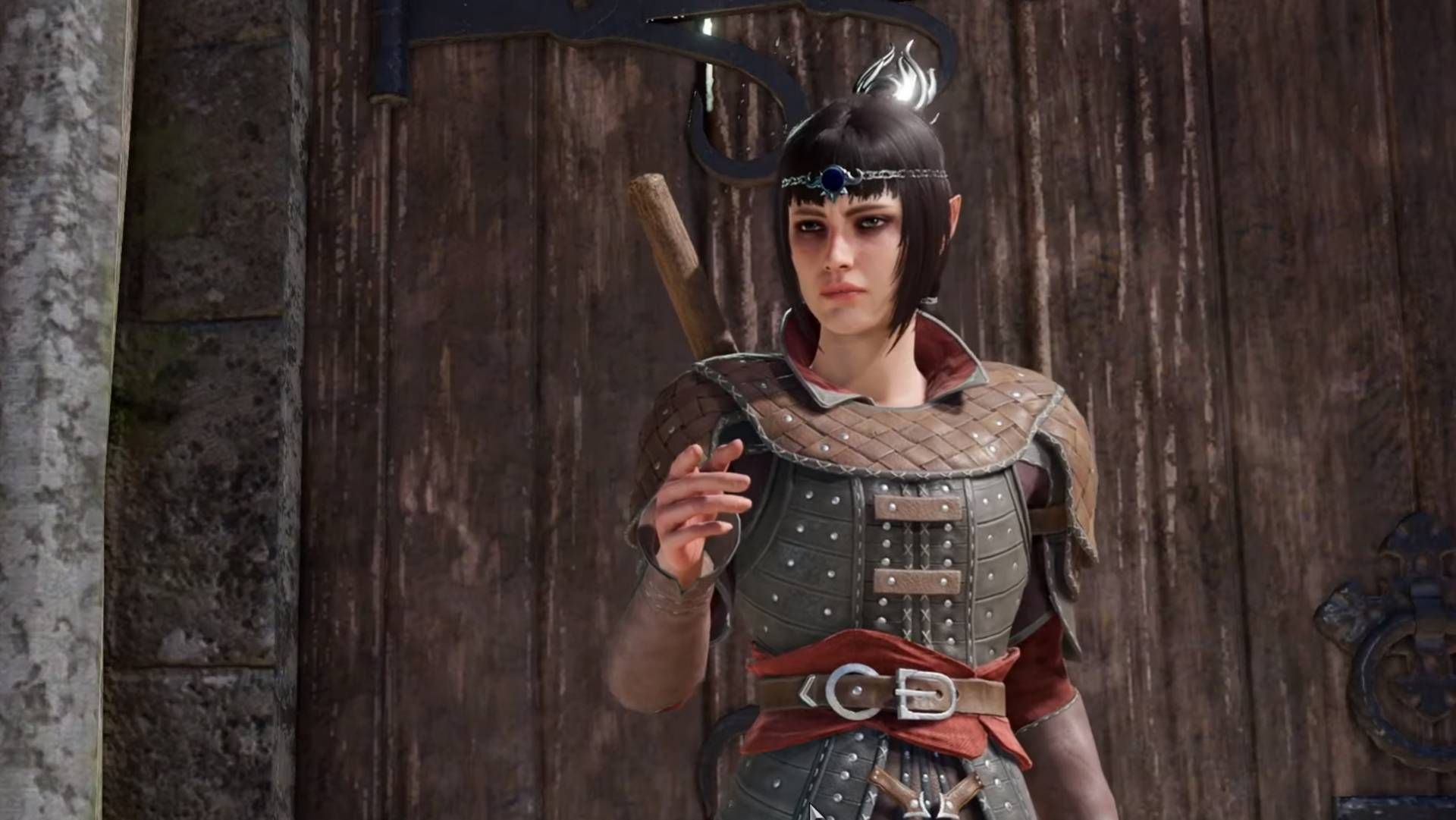Baldur’s Gate 3 is the latest game to try and adapt the Dungeons & Dragons rules to the video game format. Baldur’s Gate 3 does a great job of staying true to most of the rules, but a few major changes were made to accommodate the shift to video game.
There have been a number of D&D video games released over the years and some have adapted the rules more faithfully than others. Baldur’s Gate and Baldur’s Gate 2 did an admirable job of adapting the Advanced Dungeons & Dragons rules, but even those games changed things when needed. Baldur’s Gate 3 uses the current rules for Dungeons & Dragons, and the Early Access version of the game has revealed some of the changes that Larian Studios have made.
Related: Baldur’s Gate 3: Githyanki, Explained
Grids Are Out, Lines Are In
The battles in Dungeons & Dragons games generally use a game board that is broken down into a grid, with each square equalling 5ft of movement. This determines how many squares each character can move during their round in combat.
Baldur’s Gate 3 uses the exact same movement system from Divinity: Original Sin 2. Each character has a certain amount of movement each turn and they are free to move around the battlefield in a line created by the player. The other movement rules apply, such as Attacks of Opportunity, and the player can still perform the Dash action to move double their speed.
Alignment Is Gone
In D&D, a player determines their alignment at character creation, which represents a loose set of ethics and morals that they will follow. Alignment rarely comes up as an in-game mechanic in the current edition of D&D, especially when compared to the older iterations of the game, where classes were often locked behind alignments.
In Baldur’s Gate 3, a player is free to decide how their character will act at any time. The player’s choices will brand the character with certain tags, which will allow them to use certain dialogue options in conversation, such as a Cleric knowing about a religion or a Dwarf knowing dwarven history.
Spell Changes
Baldur’s Gate 3 shows an incredible amount of devotion to the D&D ruleset, but a few spells had to be altered in order to fit within the video game environment. These include Fire Bolt dealing 1d6 damage instead of 1d10, Shocking Grasp not dealing additional damage to enemies wearing metal armor, and Blindness/Deafness being changed to Blindness, as there is no deafness status effect.
There are some spells that had an effect determined by a random dice roll changed to a specific number. In D&D, the Sleep spell affects 5d8 hit points worth of enemies, whereas the Baldur’s Gate 3 version of the spell affects 24 hit points each time.
The Bonus Spell/Cantrip Rule Is Gone
The most overlooked rule in the D&D Player’s Handbook is found on page 202. It states that, if a character casts a spell as a Bonus Action during their round, then the only spell they can cast with their Action has to be a Cantrip. A lot of DMs and players miss this rule, which means spells like Healing Word are far more powerful than they should be.
The Bonus Action/Cantrip spell rule is gone in Baldur’s Gate 3. It’s now possible for characters to cast a spell as a Bonus Action and use a regular spell as an Action. This means Clerics can cast Cure Wounds and Healing Word in the same round. It’s unclear if this rule will be enforced in the full version of the game.
The Thief Subclass Is Way Better
The Thief archetype for Rogues in the D&D Player’s Handbook is generally considered to be weaker than the Assassin and the Arcane Trickster. The Assassin is more effective at performing sneak attacks, while the Arcane Trickster has access to spells. By comparison, the Thief’s abilities are far more situational. The Thief doesn’t get a good ability until level 13 (Use Magic Device) and most D&D campaigns don’t last that long.
The Thief archetype has received a boost in Baldur’s Gate 3. The Fast Hands ability now gives the character an additional Bonus Action on their turn that can be used on anything, while Second-Story Work gives resistance to falling damage.
Magic Items Are More Common
Magic items are rare in the current edition of D&D. The designers decided to give player characters more abilities in response to this, while the few items that did appear were more powerful, but came with new restrictions, such as having a limited number of uses each day.
Baldur’s Gate 3 is heavily based on the Divinity: Original Sin 2 engine and many magic items from that game have been adapted for D&D. As such, it’s far more common to find +1 items, potions, and scrolls. The magic arrowheads and explosives from Divinity: Original Sin 2 can also be found in Baldur’s Gate 3, and they can perform AoE attacks that leave effects on the battlefield.
Baldur’s Gate 3 Early Access is available on Google Stadia and PC on October 6, 2020.
Next: Baldur’s Gate 3: Mind Flayers, Explained
- TheGamer Originals
- Dungeons & Dragons
- Baldur's Gate 3
Scott has been writing for The Gamer since it launched in 2017 and also regularly contributes to Screen Rant. He has previously written gaming articles for websites like Cracked, Dorkly, Topless Robot, and TopTenz. He has been gaming since the days of the ZX Spectrum, when it used to take 40 minutes to load a game from a tape cassette player to a black and white TV set.
Scott thinks Chrono Trigger is the best video game of all time, followed closely by Final Fantasy Tactics and Baldur’s Gate 2. He pretends that sorcerer is his favorite Dungeons & Dragons class in public but he secretly loves bards.
Source: Read Full Article
